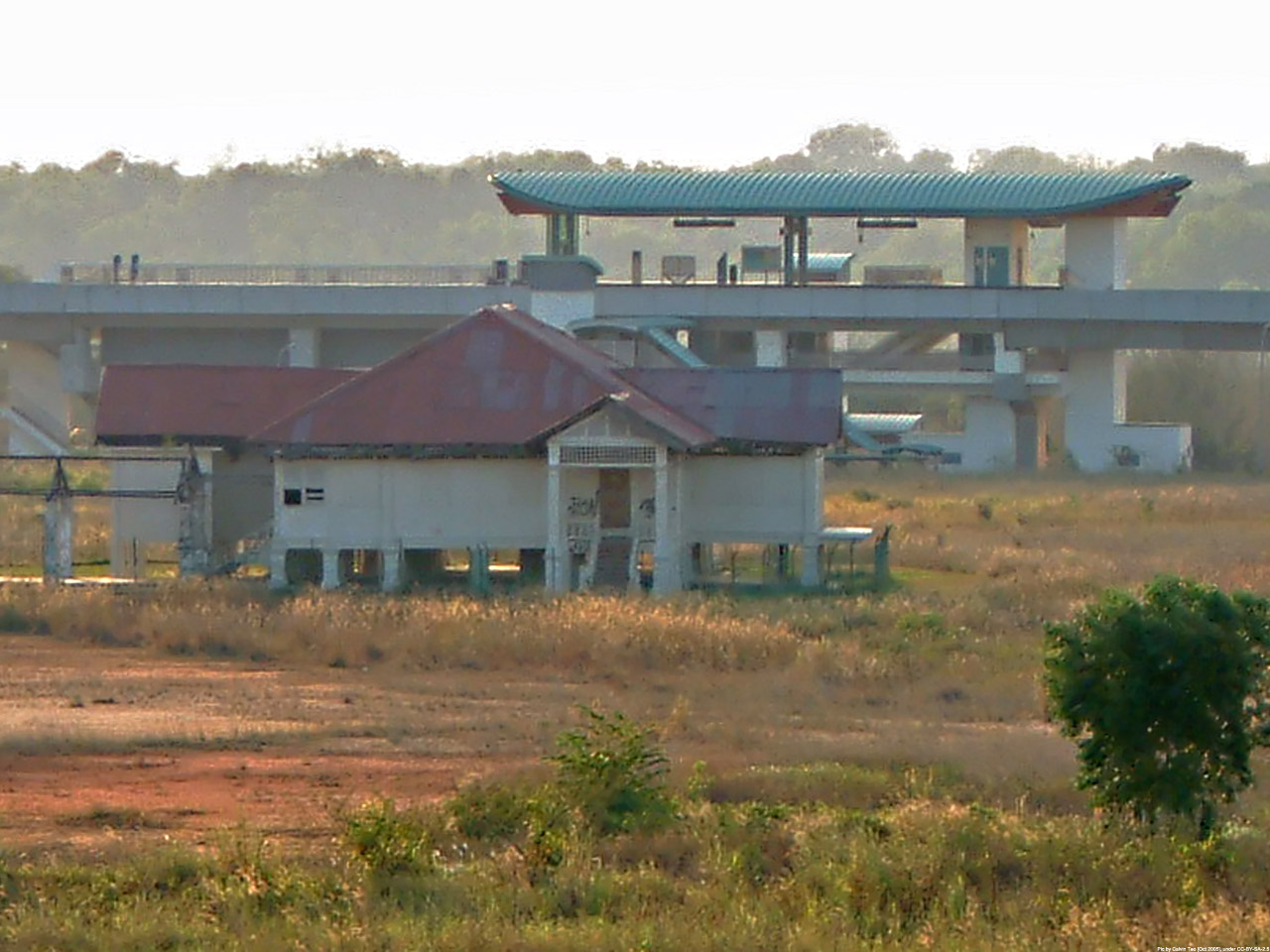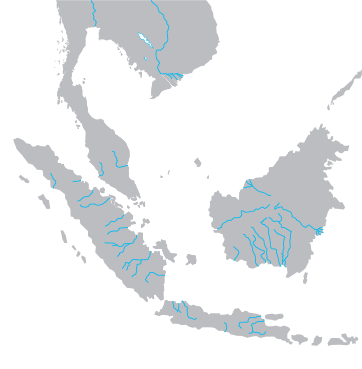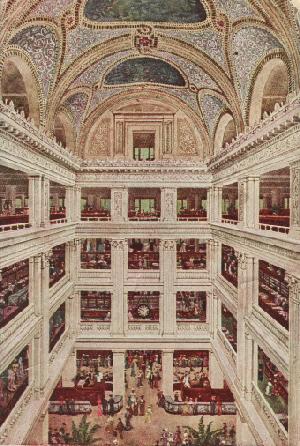|
New Towns Of Singapore
The new towns of Singapore are planned communities located across Singapore that are designed to be self-contained. Designed to house up to 300,000 residents, these new towns contain areas zoned for housing, recreation and employment, and are composed of multiple neighbourhoods, each of which is further subdivided into multiple precincts. Amenities in these new towns are provided through a multi-tiered system, and based on Housing and Development Board (HDB) guidelines. As of 2022, the country has 24 new towns. The first new town in Singapore was constructed in the 1950s by the Singapore Improvement Trust (SIT), similar to British planning concepts and at low densities. Named after Queen Elizabeth II, Queenstown is Singapore's first new town with a town centre supporting seven neighbourhoods. Subsequently, after the HDB took over public housing development in the 1960s, the densities of new towns were increased and more amenities were included, and the HDB's first new town, T ... [...More Info...] [...Related Items...] OR: [Wikipedia] [Google] [Baidu] |
Punggol
Punggol ( or ) is a Planning Areas of Singapore, planning area and New towns of Singapore, new town situated on the Tanjong Punggol peninsula in the North-East Region, Singapore, North-East Region of Singapore. The town directly borders Sengkang to the south and shares riverine boundaries with the planning area of Seletar, as well as Yishun to the west and Pasir Ris to the east. Bounding the town to the north and north-east is the Straits of Johor, with Coney Island, Punggol, Coney Island included as a part of the Punggol planning area. Under the Pungool 21 initiative, plans to turn the area into a new residential town were announced in 1996 and development of the town started in 1998. Due to the Asian financial crisis in 1997 and the financial troubles within the construction industry in 2003, the plan did not fully materialise. In 2007, a new initiative, the Punggol 21-plus plan, was introduced to redevelop the area into a waterfront town. Punggol is divided into 11 district ... [...More Info...] [...Related Items...] OR: [Wikipedia] [Google] [Baidu] |
Singapore MRT
The Mass Rapid Transit system, locally known by the initialism MRT, is a rapid transit system in Singapore and the island country's principal mode of railway transportation. After two decades of planning the system commenced operations in November 1987 with an initial stretch consisting of five stations. The network has since grown to span the length and breadth of the country's main island – with the exception of the forested core and the rural northwestern region – in accordance with Singapore's aim of developing a comprehensive rail network as the backbone of the country's public transportation system,Singapore's heavy rail network is composed of three distinct systems. Two of the three are rapid transit networks, chiefly a) the MRT system, which falls entirely within the city-state and forms the core of the network, and b) the two-station cross-border Johor Bahru–Singapore rapid transit system (RTS), linked to the mainline MRT and due to commence operations in en ... [...More Info...] [...Related Items...] OR: [Wikipedia] [Google] [Baidu] |
Pinyin
Hanyu Pinyin, or simply pinyin, officially the Chinese Phonetic Alphabet, is the most common romanization system for Standard Chinese. ''Hanyu'' () literally means 'Han Chinese, Han language'—that is, the Chinese language—while ''pinyin'' literally means 'spelled sounds'. Pinyin is the official romanization system used in China, Singapore, Taiwan, and by the United Nations. Its use has become common when transliterating Standard Chinese mostly regardless of region, though it is less ubiquitous in Taiwan. It is used to teach Standard Chinese, normally written with Chinese characters, to students in mainland China and Singapore. Pinyin is also used by various Chinese input method, input methods on computers and to lexicographic ordering, categorize entries in some Chinese dictionaries. In pinyin, each Chinese syllable is spelled in terms of an optional initial (linguistics), initial and a final (linguistics), final, each of which is represented by one or more letters. Initi ... [...More Info...] [...Related Items...] OR: [Wikipedia] [Google] [Baidu] |
Chinese Characters
Chinese characters are logographs used Written Chinese, to write the Chinese languages and others from regions historically influenced by Chinese culture. Of the four independently invented writing systems accepted by scholars, they represent the only one that has remained in continuous use. Over a documented history spanning more than three millennia, the function, style, and means of writing characters have changed greatly. Unlike letters in alphabets that reflect the sounds of speech, Chinese characters generally represent morphemes, the units of meaning in a language. Writing all of the frequently used vocabulary in a language requires roughly 2000–3000 characters; , nearly have been identified and included in ''The Unicode Standard''. Characters are created according to several principles, where aspects of shape and pronunciation may be used to indicate the character's meaning. The first attested characters are oracle bone inscriptions made during the 13th century&n ... [...More Info...] [...Related Items...] OR: [Wikipedia] [Google] [Baidu] |
Malay Language
Malay ( , ; , Jawi alphabet, Jawi: ) is an Austronesian languages, Austronesian language spoken primarily by Malays (ethnic group), Malays in several islands of Maritime Southeast Asia and the Malay Peninsula on the mainland Asia. The language is an official language of Brunei, Malaysia, and Singapore. Indonesian language, Indonesian, a standardized variety of Malay, is the official language of Indonesia and one of the working languages of East Timor. Malay is also spoken as a regional language of Malays (ethnic group), ethnic Malays in Indonesia and the Thai Malays, southern part of Thailand. Altogether, it is spoken by 60 million people across Maritime Southeast Asia. The language is pluricentric and a ISO 639 macrolanguage, macrolanguage, i.e., a group of Mutual intelligibility, mutually intelligible speech varieties, or dialect continuum, that have no traditional name in common, and which may be considered distinct languages by their speakers. Several varieties of it ar ... [...More Info...] [...Related Items...] OR: [Wikipedia] [Google] [Baidu] |
English Language
English is a West Germanic language that developed in early medieval England and has since become a English as a lingua franca, global lingua franca. The namesake of the language is the Angles (tribe), Angles, one of the Germanic peoples that Anglo-Saxon settlement of Britain, migrated to Britain after its End of Roman rule in Britain, Roman occupiers left. English is the list of languages by total number of speakers, most spoken language in the world, primarily due to the global influences of the former British Empire (succeeded by the Commonwealth of Nations) and the United States. English is the list of languages by number of native speakers, third-most spoken native language, after Mandarin Chinese and Spanish language, Spanish; it is also the most widely learned second language in the world, with more second-language speakers than native speakers. English is either the official language or one of the official languages in list of countries and territories where English ... [...More Info...] [...Related Items...] OR: [Wikipedia] [Google] [Baidu] |
Department Stores
A department store is a retail establishment offering a wide range of consumer goods in different areas of the store under one roof, each area ("department") specializing in a product category. In modern major cities, the department store made a dramatic appearance in the middle of the 19th century, and permanently reshaped shopping habits, and the definition of service and luxury. Similar developments were under way in London (with Whiteleys), in Paris () and in New York City ( Stewart's). Today, departments often include the following: clothing, cosmetics, do it yourself, furniture, gardening, hardware, home appliances, houseware, paint, sporting goods, toiletries, and toys. Additionally, other lines of products such as food, books, jewellery, electronics, stationery, photographic equipment, baby products, and products for pets are sometimes included. Customers generally check out near the front of the store in discount department stores, while high-end traditional departm ... [...More Info...] [...Related Items...] OR: [Wikipedia] [Google] [Baidu] |
Shopping Center
A shopping center in American English, shopping centre in English in the Commonwealth of Nations, Commonwealth English (see American and British English spelling differences#-re, -er, spelling differences), shopping complex, shopping arcade, shopping plaza, or galleria, is a group of shops built together, sometimes under one roof. The first known collections of retailers under one roof are marketplace, public markets, dating back to ancient times, and Middle Eastern covered markets, bazaars and souqs. In Paris, about 150 Covered passages of Paris, covered passages were built between the late 18th century and 1850, and a wealth of Arcade (architecture)#Shopping arcades, shopping arcades were built across Europe in the 19th century. In the United States, the widespread use of the automobile in the 1920s led to the first shopping centers consisting of a few dozen shops that included parking for cars. Starting in 1946, larger, open air centers anchored by department stores were b ... [...More Info...] [...Related Items...] OR: [Wikipedia] [Google] [Baidu] |
Town Council (Singapore)
In Singapore, a Town Council (TC) is an administrative body formed by one or more elected Member of Parliament (MPs), along with appointed residents, to manage the common property and day-to-day maintenance of Housing and Development Board (HDB) residential and commercial estates within a designated town. TCs are primarily responsible for estate management and operate under a limited form of local governance. Unlike in many other countries, there are no separate local elections for TCs; their composition is determined by the outcomes of parliamentary general elections. As such, their leadership and structure are closely tied to national political boundaries and depends entirely on which MPs represent their constituencies at the national level. TCs do not possess legislative or executive powers independent of the national government and may change following electoral boundary revisions. The scheme has drawn mixed responses. Supporters argue that it enhances MP accountabilit ... [...More Info...] [...Related Items...] OR: [Wikipedia] [Google] [Baidu] |
Central Area, Singapore
The Central Area, also called the City Area, and informally The City, is the main commercial and financial city centre of Singapore. Located in the south-eastern part of the Central Region, the Central Area consists of eleven constituent planning areas: the Downtown Core, Marina East, Marina South, the Museum Planning Area, Newton, Orchard, Outram, River Valley, Rochor, the Singapore River and Straits View, as defined by the Urban Redevelopment Authority. The term Central Business District (CBD) has also been used to describe most of the Central Area as well, although its boundaries lie within the Downtown Core. Singapore's modern history began in this area, when British colonial official Stamford Raffles and representatives of the British East India Company landed along the banks of the Singapore River in 1819 to set up a free port of trade between Europe and Asia. As the old harbour grew along the mouth of the river bank, the historical city naturally expanded aro ... [...More Info...] [...Related Items...] OR: [Wikipedia] [Google] [Baidu] |
Ang Mo Kio
Ang Mo Kio () is a planning area and residential town situated in the Central Region of Singapore. Located approximately north of the Downtown Core district, Ang Mo Kio is the 4th most populated planning area in the North-East region and ranks 11th in terms of population in the country overall. The planning area is located at the south-western corner of the North-East region, bordered by the planning areas of Yishun to the north, Sengkang and Hougang to the north-east, Serangoon to the east, Bishan to the south and the Central Water Catchment to the west. Prior to urbanization, the area, much like other rural districts in Singapore at the time, was largely undeveloped, being mainly used for agricultural purposes, with uninhabited plots of land usually covered in dense secondary forest or swamps. [...More Info...] [...Related Items...] OR: [Wikipedia] [Google] [Baidu] |






